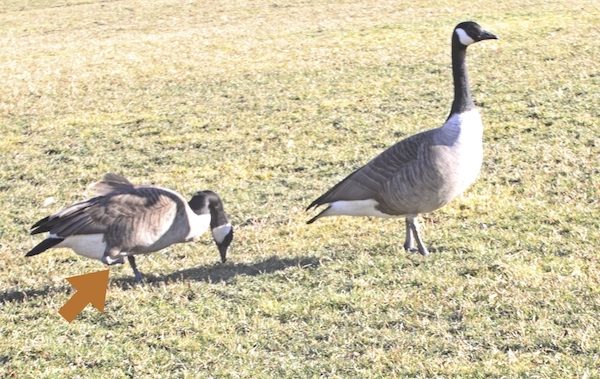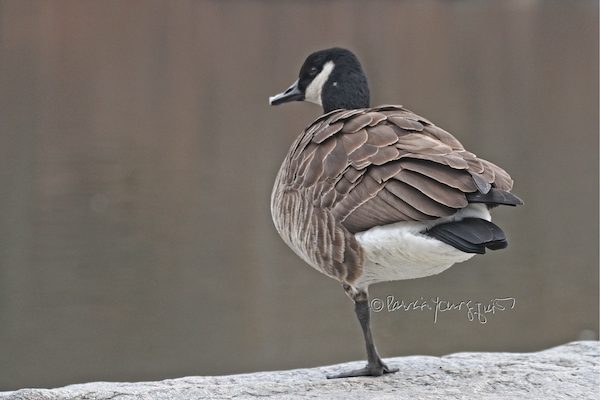The grassy area alongside Turtle Pond in Central Park is a popular spot for picnickers, sunbathers and “grazing Canadian geese” (fowl who enjoy nibbling on the grass). Among those birds people can often find Kaitlin, a one-legged goose.

She apparently lost most of her leg from getting it tangled within a fishing line while swimming in Central Park’s Boat Lake. When thread, fishing line, balloon ribbon, wire, or a similar thin, durable string is tightened around a bird’s leg, it will eventually cut off circulation and cause amputation. This is particularly true if the thread is tightened so far that it cuts into the leg, or if the bird is young and still growing.
Apparently Kaitlin’s accident occurred a number of years ago and her mate, a faithful gander, remains at her side as he attempts to protect her from harm.

The loss of a limb is traumatic and made more so by the fact that often a bird with one leg is abandoned by his/her mate, or if single, has more difficulty finding a partner, particularly if the species’ courtship displays require two strong legs. However, as you can see, Kaitlin, seems to have a loyal, loving partner. Often on lookers, familiar with Central Park’s one-limbed goose and her faithful mate continue to be impressed with his loyalty and compassion.
Most of the time when a given bird experiences limb loss, he/she will not survive. Other consequences of the injury, such as weakness or infection, may be detrimental but, fortunately some birds are able to adapt to being one-legged and compensate for the missing leg.

It is important to know that birds can often appear to have lost a leg without really missing any limbs. This is because many birds tuck one leg into their plumage to warm it up on cool days, or to keep it off a hot surface during the summer. This is a common form of temperature regulation, and any bird species could seem to be missing a leg now and then when in actuality he/she is doing what needs to be done to survive weather conditions and/or just be comfortable.
Observers of avian creatures who watch carefully, notice that birds will switch legs periodically, shifting their balance to the other leg. Obviously if a bird has lost his/her leg they will not be able to switch legs to warm up or cool down which can make survival more difficult especially if the one-legged bird has lost his/her partner.
While it can be startling to see a one-legged bird, learning more about these injuries can help people take steps to provide for impaired birds and minimize the risks of more injuries. At the same time, seeing how these birds adapt should strengthen any person’s respect and appreciation for just how resilient avian creatures can be.


